No, The Universe Cannot Be A Billion Years Younger Than We Think
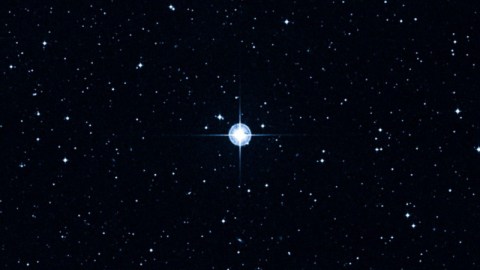
There really is a cosmic conundrum about how fast the Universe is expanding. Changing its age won’t help.
One of the most surprising and interesting discoveries of the 21st century is the fact that different methods of measuring the expansion rate of the Universe yield different, inconsistent answers. If you measure the expansion rate of the Universe by looking at the earliest signals — early density fluctuations in the Universe that were imprinted from the early stages of the Big Bang — you find that the Universe expands at one particular rate: 67 km/s/Mpc, with an uncertainty of about 1%.
On the other hand, if you measure the expansion rate using the cosmic distance ladder — by looking at astronomical objects and mapping their redshifts and distances — you get a different answer: 73 km/s/Mpc, with an uncertainty of about 2%. This really is a fascinating cosmic conundrum, but despite claims by one team to the contrary, you cannot fix it by making the Universe a billion years younger. Here’s why.
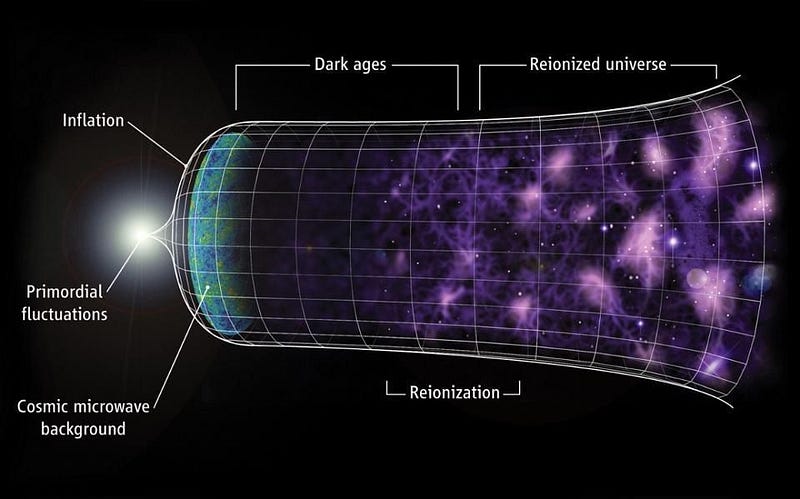
At first glance, you might think that the expansion rate of the Universe has everything to do with how old the Universe is. After all, if we go back to the moment of the hot Big Bang, and we know the Universe was expanding extremely rapidly from this hot, dense, state, we know it must have cooled and slowed as it expanded. The amount of time that has passed since the Big Bang, along with the ingredients (like radiation, normal matter, dark matter and dark energy) it’s made of, determine how fast the Universe should be expanding today.
If it expands 9% faster than we previously suspected, then perhaps the Universe is 9% younger than we’d anticipated. This is the naive (and incorrect) reasoning applied to the problem, but the Universe isn’t as simple as that.
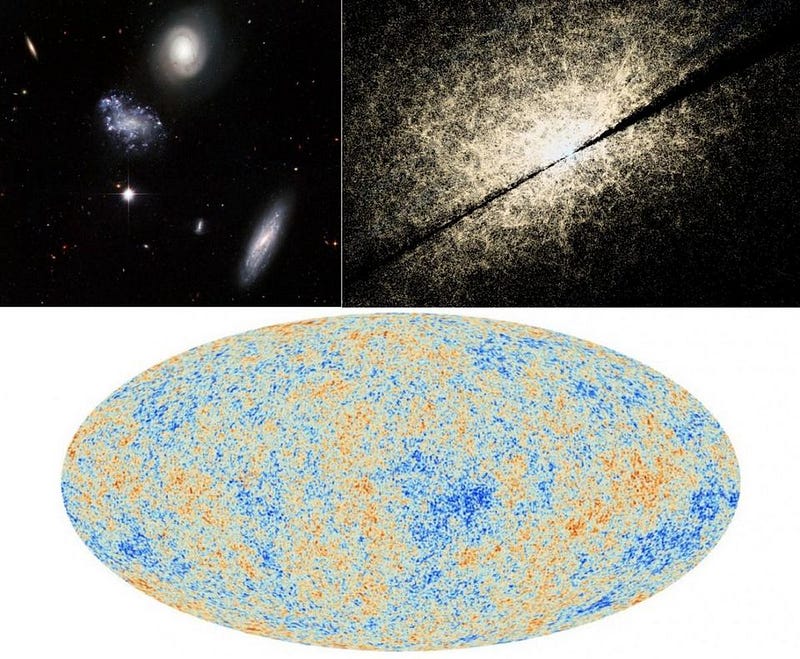
The reason you cannot simply do this is that there are three independent pieces of evidence that have to all fit together in order to explain the Universe.
- You must consider the early relic data, from features (known as baryon acoustic oscillations, which represent interactions between normal matter and radiation) that appear in the large-scale structure of the Universe and the fluctuations in the cosmic microwave background.
- You must consider the distance ladder data, which uses the apparent brightnesses and measured redshifts of objects to reconstruct both the expansion rate and the change in the expansion rate over time throughout our cosmic history.
- And, finally, you must consider the stars and star clusters we know of in our galaxy and beyond, which can have the ages of their stars independently determined through astronomical properties alone.
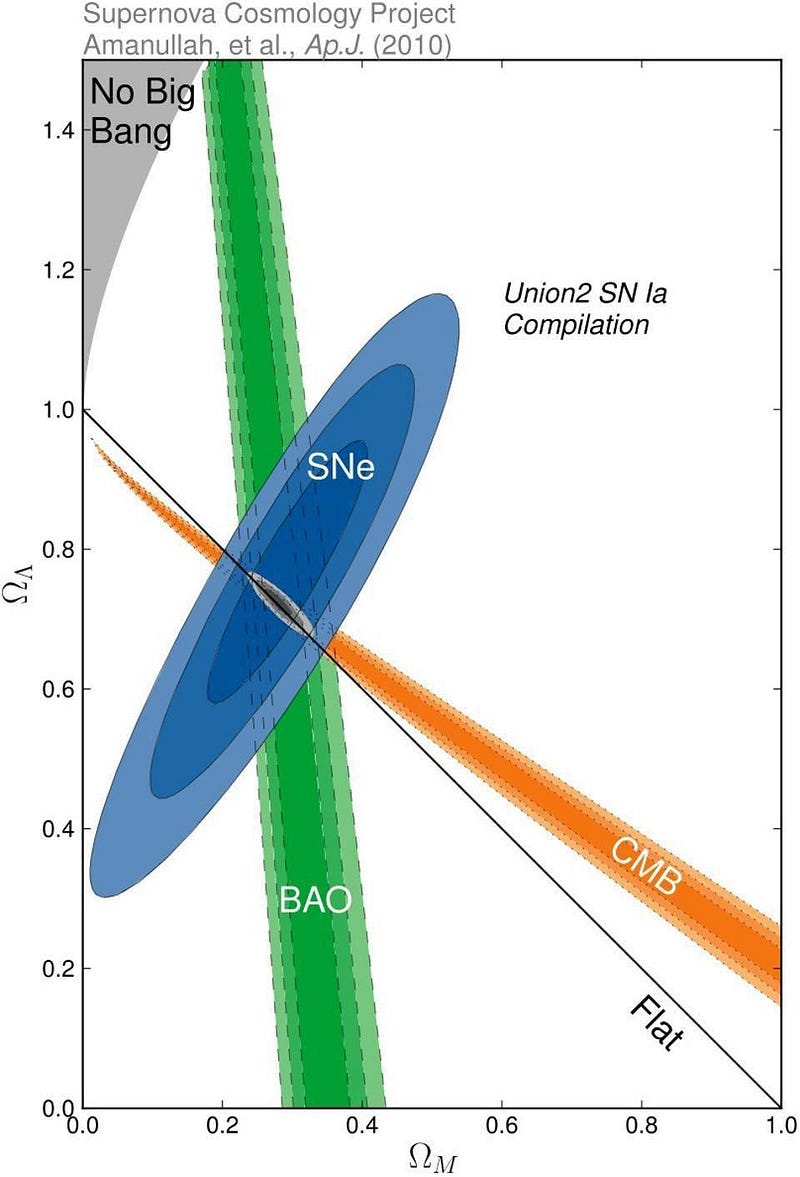
If we look at the first two pieces of evidence — the early relic data and the distance ladder data — this is where the huge discrepancy in the expansion rate comes from. You can determine the expansion rate from both, and this is where the 9% inconsistency comes from.
But this is not the end of the story; not even close. You can see, from the graph above, that the distance ladder data (which includes the supernova data, in blue) and the early relic data (which is based on both baryon acoustic oscillations and cosmic microwave background data, in the other two colors) not only intersect and overlap, but that there are uncertainties in both the dark matter density (x-axis) and dark energy density (y-axis). If you have a Universe with more dark energy, it’s going to appear older; if you have a Universe with more dark matter; it’s going to appear younger.
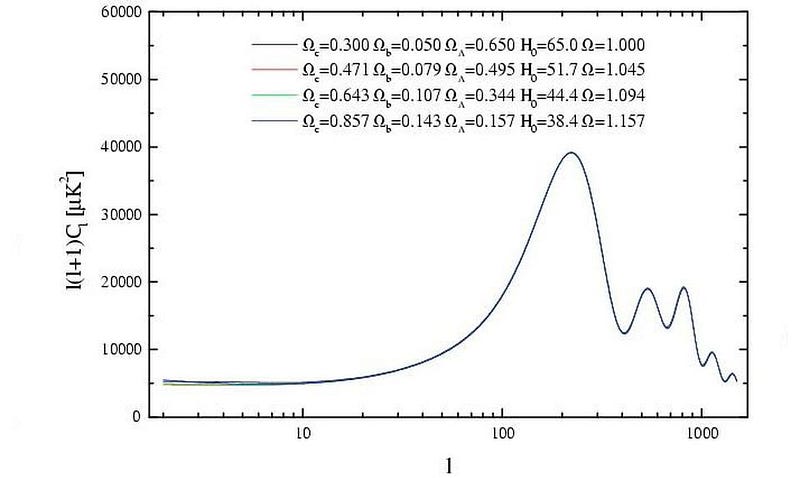
This is the big issue when it comes to the early relic data and the distance ladder data: the data that we have can fit multiple possible solutions. A slow expansion rate can be consistent with a Universe with the fluctuations we see in the cosmic microwave background, for example (shown above), if you tweak the normal matter, dark matter, and dark energy densities, along with the curvature of the Universe.
In fact, if you look at the cosmic microwave background data alone, you can see that a larger expansion rate is very much possible, but that you need a Universe with less dark matter and more dark energy to account for it. What’s particularly interesting, in this scenario, is that even if you demand a higher expansion rate, the act of increasing the dark energy and decreasing the dark matter keeps the age of the Universe practically unchanged at 13.8 billion years.
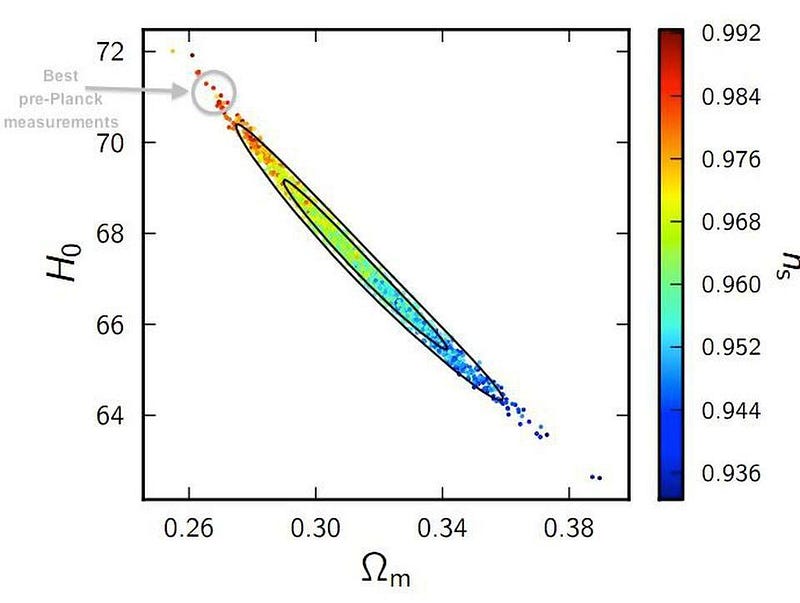
If we work out the math where the Universe has the following parameters:
- an expansion rate of 67 km/s/Mpc,
- a total (normal+dark) matter density of 32%,
- and a dark energy density of 68%,
we get a Universe that’s been around for 13.81 billion years since the Big Bang. The scalar spectral index (ns), in this case, is approximately 0.962.
On the other hand, if we demand that the Universe have the following very different parameters:
- an expansion rate of 73 km/s/Mpc,
- a total (normal+dark) matter density of 24%,
- and a dark energy density of 76%,
we get a Universe that’s been around for 13.72 billion years since the Big Bang. The scalar spectral index (ns), in this case, is approximately 0.995.
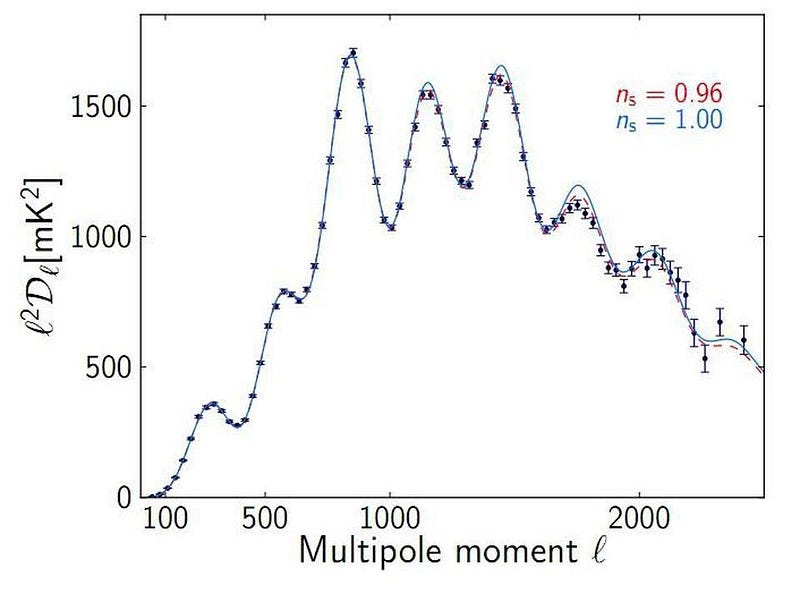
Sure, the data we have for the scalar spectral index disfavors this value, but that’s not the point. The point is this: making the Universe expand faster does not imply a younger Universe. Instead, it implies a Universe with a different ratio of dark matter and dark energy, but the age of the Universe remains largely unchanged.
This is very different from what one team has been asserting, and it’s extremely important for a reason we’ve already brought up: the Universe must be at least as old as the stars within it. Although there are certainly substantial error bars (i.e., uncertainties) on the ages of any individual star or star cluster, the full suite of evidence cannot be reconciled very easily with a Universe that’s younger than about 13.5 billion years.
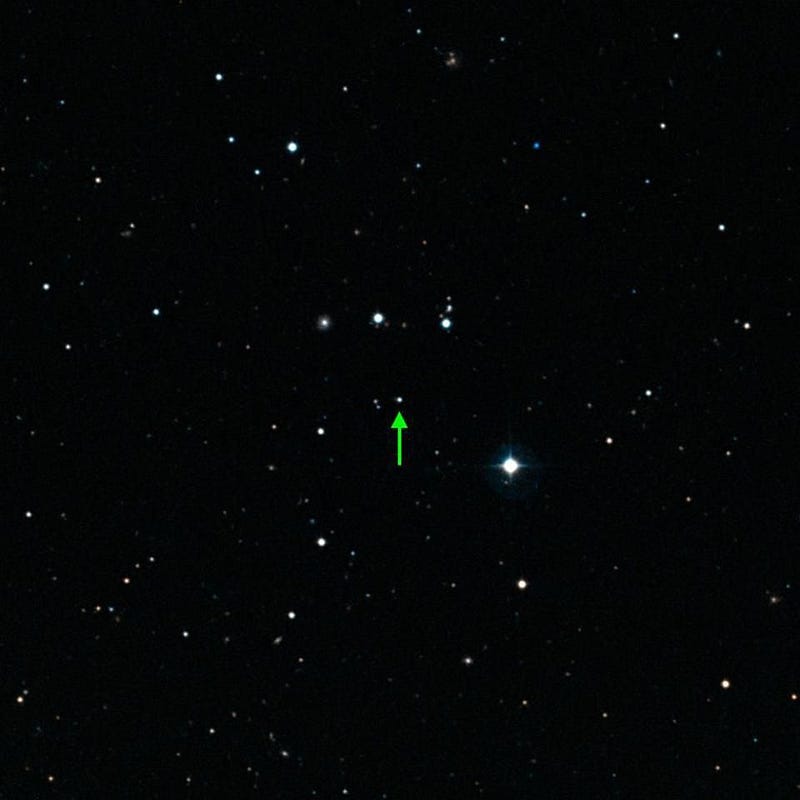
It takes at least 50-to-100 million years for the Universe to form the first stars of all, and those stars were made of hydrogen and helium alone: they no longer exist today. Instead, the oldest individual stars are found in the outskirts of halos of individual galaxies, and have extraordinarily tiny amounts of heavy elements. These stars are, at best, part of the second generation of stars to form, and their ages are inconsistent with a Universe that’s a billion years younger than the accepted, best-fit 13.8 billion year figure.
But we can go beyond individual stars and look at the ages of globular clusters: dense collections of stars that formed back in our Universe’s early stages. The stars inside, based on which ones have turned into red giants and which ones have yet to do so, give us a completely independent measurement of the Universe’s age.
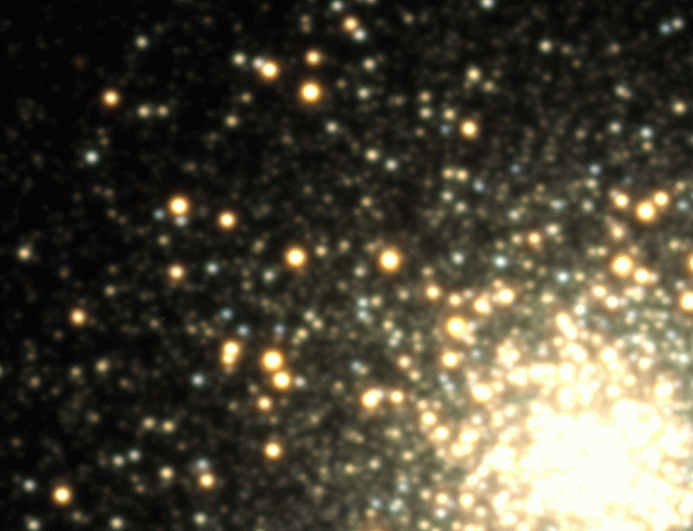
The science of astronomy began with the studies of the objects in the night sky, and no object is more numerous or apparent to the naked eye than the stars. Through centuries of study, we’ve learned one of the most essential pieces of astronomical science: how stars live, burn through their fuel, and die.
In particular, we know that all stars, when they’re alive and burning through their main fuel (fusing hydrogen into helium), have a specific brightness and color, and remain at that specific brightness and color only for a certain amount of time: until their cores start to run out of fuel. At that point, the brighter, bluer and higher mass stars begin to “turn off” of the main sequence (the curved line on the color-magnitude diagram, below), evolving into giants and/or supergiants.
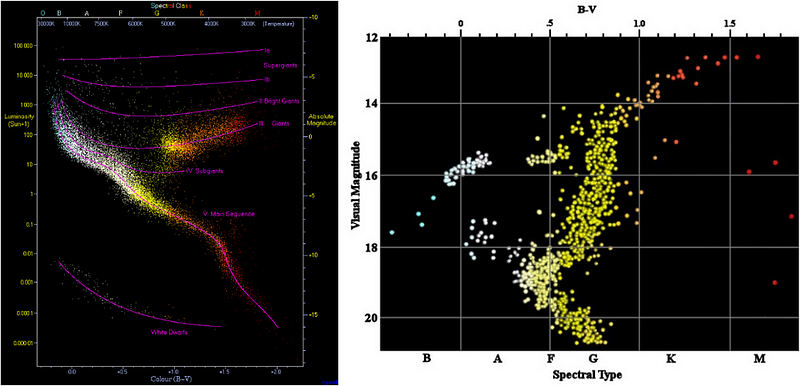
By looking at where that turn-off-point is for a cluster of stars that all formed at the same time, we can figure out — if we know how stars work — how old those stars in the cluster are. When we look at the oldest globular clusters out there, the ones lowest in heavy elements and whose turn-offs come for the lowest-mass stars out there, many are older than 12 or even 13 billion years, with ages up to around 13.2 billion years.
There are none that are older than the currently accepted age of the Universe, which seems to provide an important consistency check. The objects we see in the Universe would have a tremendously hard time reconciling with an age of the Universe of 12.5 billion years, which is what you’d get if you lowered our best-fit figure (of 13.8 billion years) by 9%. A younger Universe is, at best, a cosmic long-shot.
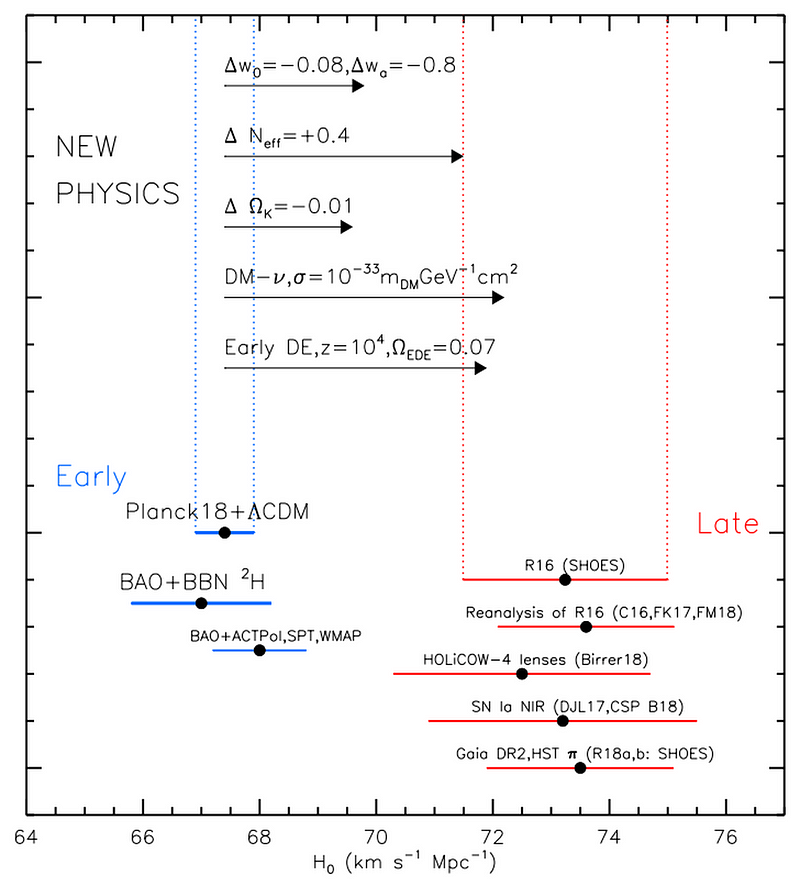
There may be some who contend we don’t know what the age of the Universe is, and that this conundrum over the expanding Universe could result in a Universe much younger than what we have today. But that would invalidate a large amount of robust data we already have and accept; a far more likely resolution is that the dark matter and dark energy densities are different than we previously suspected.
Something interesting is surely going on with the Universe to provide us with such a fantastic discrepancy. Why does the Universe seem to care which technique we use to measure the expansion rate? Is dark energy or some other cosmic property changing over time? Is there a new field or force? Does gravity behave differently on cosmic scales than expected? More and better data will help us find out, but a significantly younger Universe is unlikely to be the answer.
Ethan Siegel is the author of Beyond the Galaxy and Treknology. You can pre-order his third book, currently in development: the Encyclopaedia Cosmologica.





